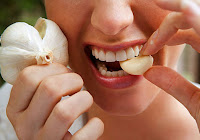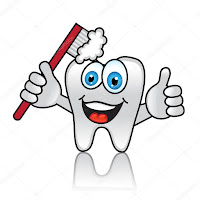 |
| Tooth Pain Remedy |
Tooth pain
is one of the most common dental problems that dentists to come across in their
clinic. Tooth pain was just as common long before modern dentistry but people
had to rely on natural toothache remedies to rid their pain. Although there are
many treatment options available with modern medicine with proper use, these
natural toothache remedies can help you avoid the dentist altogether.
Causes of tooth pain:
 |
| Tooth Pain |
The first thing most people think that causes tooth pain when they experience tooth pain is cavities. However, there are plenty of other causes of toothache. In fact, the main causes of toothaches are sometimes cavities, an infection, an exposed
tooth root, a cracked tooth, gum disease, a loose filling, or jaw joint
disorder. Toothaches can be mild soreness or unbearable throbbing pain in
your teeth or around your jaws. There are several nerve endings present in the pulp
and that is highly sensitive. The pulp can become irritated for many reasons as
mention above. Some toothaches go away on their own but others indicate some
are serious problems.
13 At Home Toothache Remedies
Some of these toothache remedies are so easily
to use that you can use anywhere, even if you are traveling in the car!
1. Clove Oil:
 |
| Tooth Pain Remedy |
You can use
cloves as a quick and effective home remedy. Cloves are very popular for their
anti-bacterial, anti-inflammatory, and anesthetic properties. Clove oil contains
high levels of Eugenia, an anesthetic, and an antiseptic compound. It is even used in modern dentistry to relieve pain and kills germs during extractions, fillings, and root canals. One
study even found that it is as effective and numbing pain as the synthetic
local anesthetic benzocaine.
To use, mix
one teaspoon of coconut oil with two to three drops of clove oil. Put 2 drops
of clove oil on a cotton swab and put that swab to the tooth. You can also grind
2 or 3 cloves and put them directly to the place of pain. It will fight
infection and will give you temporary pain relief by numbing the area. For
maximum relief, you should apply a bit of the oil directly onto the tooth and
gum. If there is a noticeable cavity, present you can even apply a drop of
clove oil into the opening. You may feel a burning sensation but you will
definitely feel relief.
2. Ginger Cayenne and Paste:
This antibiotic paste helps control bleeding,
reduce swelling relieve pain, and fight infection. Make a paste by mixing equal
parts of ginger and cayenne with a little bit of water. Dip a cotton ball in
the mixture paste and apply to your tooth, away from your gums and tongue.
Leave it on as long as possible. Do not swallow if possible.
Salt is
found in everyone’s kitchen. So this method is considered one of the
earliest and easiest methods. Mix 1 tablespoon of salt with water and swish the
mixture in your mouth. Keep saltwater
in your mouth for a while and then spit it out. Saltwater is very effective
to kill bacteria residing in your mouth. It will also reduce inflammation give
your sore throat relief. In addition to easing the pain and cleaning the infected
areas, the salt also helps to draw out excess fluid around the swollen gum
tissues.
4. Peppermint Oil:
According to
a study (2013), peppermint oil is an effective intracanal antiseptic solution
against oral pathogens. Peppermint contains a number of anti-septic agents that
can help destroy the bacteria that is creating an abscessed tooth. The oil also
serves as an anti-inflammatory medication and will relieve the painful swelling
and your gum. Use a cotton swab to apply a few drops of peppermint oil to the
affected tooth. Be sure that you also dab a bit of this herbal extract on the
surrounding gum tissue. You can also use peppermint leaves to use it as
peppermint tea. The best way to make peppermint tea by taking at least 1 teaspoon of peppermint leaves steeped for a minimum of 20 minutes. This will
also relieve bad breath and a bad headache a typical side effect of tooth pain.
Alternatively steep up some strong black tea, drink up, and place a warm wet
tee back against the affected tooth.
5. Myrhh:
As per RDH
‘Myrrh’s astringent properties help with inflammation and rinse can offer the
added benefit of reducing bacteria’. To
make your own myrhh rinse, simmer 1 teaspoon of powdered myrrh in two teacups
of water. Let it cool and use five or six times a day late after eating. You
can also simply buy a myrhh tincture at your local health food store, dilute in
water, and apply the solution to the affected tooth using a cotton swab. Do not
use myrhh long-term and avoid if you suffer from kidney problems.
6. Raw Garlic:
Garlic has
antibiotic properties and known for killing bacteria. Allicin, the main active
compound in garlic, does not respond well to heat so it is best to use raw
garlic as medicine. The anti-inflammatory compounds in the garlic should help
reduce swelling and soothe the irritated nerve endings that are causing you the
pain. To activate its beneficial compounds, crush a clove of garlic and let it
sit for 15 minutes. Then, you can either mash it with a bit of salt or apply the
paste directly to the affected tooth or to the clove using the affected tooth.
Repeat 2 to 3 times daily as needed.
7. Calendula:
Use the
leave of a Calendula plants to help control pain and inflammation in your
mouth. You can make a paste of some crushed leaves and apply it directly to the
tooth with a cotton swab. You may also dab a small amount of calendula extract
on your finger, rub the throbbing tooth, and gum area. Apply two to three times
daily. There are also a number of oral gels and toothpastes available, which
use Calendula as an ingredient. If you have one of these products available
just swab a small amount onto the aching tooth.
8. Turmeric Paste:
A combined
paste of turmeric and coconut oil has both the antibacterial and antiviral properties
that are helpful to fight infection related pain. It also combats irritation,
bad breath, tooth stains and gum redness.
Here is how
to make it:
Ingredients:
1 tablespoon coconut oil. ½ to 1 tsp turmeric powder. A few drops of peppermint
oil. Instructions: Mix the ingredients to a perfect blend. Wet your toothbrush
with some water and dip it into the turmeric paste. Brush your teeth normally
with this mixture just as you would with regular toothpaste. Let it sit for
about 3 to 5 minutes. Spitting can rinse your mouth well. Use daily.
9. Onion:
Onion is also
known for its antibacterial properties. Cut onion and squeeze its water.
Apply this water with a cotton swab to the area where the toothache is felt. You can
also, chew some raw onion if it is not bothering you.
10. Acupressure:
Acupressure
technique can give fast relief to stop tooth pain. Some people find that
acupressure provides quick relief for tooth pain, especially if you are in a
pinch. With your thumb, press the point on the back of your other hand where
the base of your thumb and your index finger meet. Apply pressure for about two
minutes. This helps trigger the release of endorphin, the brain’s feel-good
hormones.
11. Ice:
The presence
of cold helps to alleviate pain and swelling in superficial nerves. So applying
an ice pack wrapped in a towel to the face may help numb the pain. However, you
should never apply ice directly to the tooth. This will for the time being
relieve pain and swelling before go through treatment.
12. Essential Oils:
Rinsing
mouth with essential oils is found to be highly effective in inhibiting plaque,
according to a study (2014) published in the Journal of International Oral
Health. Pizza et al. carried out a comparative study on plaque
inhibitory effect of amine, fluoride
(stannous fluoride) and essential oils showed no significant difference
in efficacy of both. Essential oils can be used as an alternative to
chlorhexidine rinse, as chlorhexidine causes staining of teeth on long-term
use. Essential oils have shown to possess antimicrobial activity against
sub-gingival periopathogens, too’.
Essential oils commonly used for toothache are Cinnamon oil, Spearmint
oil, Myrrh, Peppermint oil, Clove oil, Tea Tree Oil.
13. Hydrogen Peroxide:
Hydrogen
peroxide is a common home remedy for dental problems. It will kill bacteria and
reduce infection. Be sure to mix the peroxide with water. It will harm teeth
and gums if it is used at full strength. Combine 2 tsp of hydrogen peroxide
with a tsp of warm water. Rinse your tooth just like water salt solution. It
will kill bacteria and reduce infection. Do not swallow the solution spit it
out. After that, rinse your mouth with plain water. This method is not safe
particularly for children.
Tips to avoid Tooth Pain and Dental Problems:
To prevent
many of the causes of tooth pain, regular tooth hygiene is important. The simple but most important way of dental hygiene is to brush your teeth twice a day, in
the morning and at night. While the jury is not, out on whether you should
floss or not, it may be a good idea to it anyways, especially if you often get
food stuck in your teeth. Additionally, if you are prone to gum disease and
cavities, rinse with warm salt water after eating. Mouthwash that contains
alcohol must be avoided. Avoid smoking or tobacco products. With the above
toothache remedies, a healthy diet, and proper daily care your smile will shine
brightly for years to come.
When
To Visit A Doctor?
In addition
to trying these remedies, some dental and gum problems require more aggressive
treatment than home remedies. You need to visit the dentist immediately if you
experienced a severe toothache that lasts longer than 1 or 2 days; accompanied
by fever, difficulty breathing or swallowing, earache or pain when you open
your mouth or foul-tasting drainage from the infected tooth. These remedies
will give you temporary relief until you get a doctor’s appointment. Make sure to
consult your dentist under such cases.














Comments